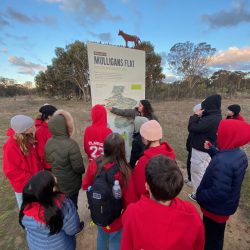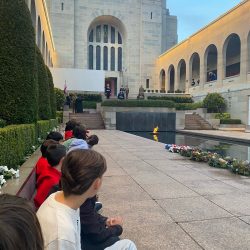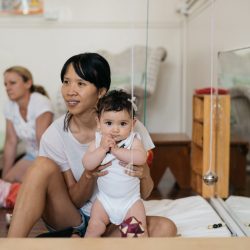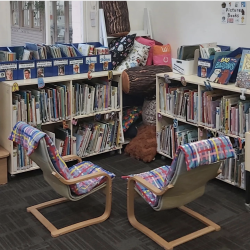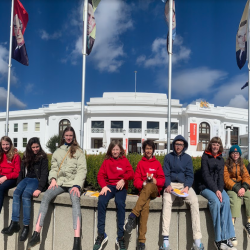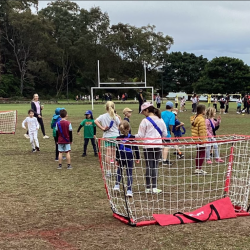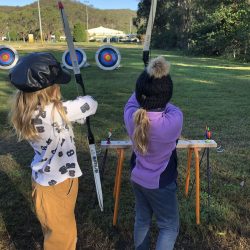Preschool to Kindergarten: Stage 1 (3 – 6 years)
Children aged three to six are sensorial explorers. These children are catered for in Stage 1 (3 – 6 years) Preschool to Kindergarten.
A Director’s comprehensive understanding of the characteristics of children from 3 – 6 years informs the set-up of a carefully prepared environment, facilitating the tuition of core curriculum categorised as Practical Life, Sensorial, Language and Literacy and Mathematics.
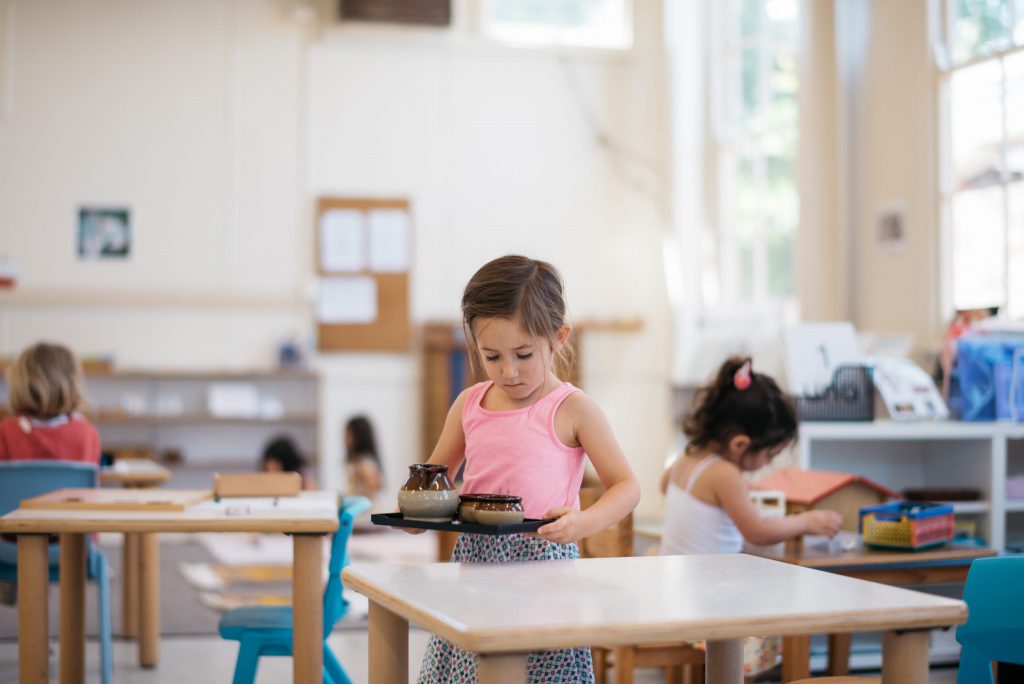
Characteristics of Children 3 – 6 Years
A thorough awareness of the developmental characteristics of the children at 3 – 6 years of age (the second plane of development) helps us to understand the:
- role of the adult in the child’s education.
- necessary components of the prepared learning environment.
- most beneficial materials and activities needed to meet the child’s social/intellectual potentials.
- possible obstacles to the children’s learning.
- potential opportunities to build the child’s independence.
The characteristics of children between 3 – 6 years old:
Physical characteristics
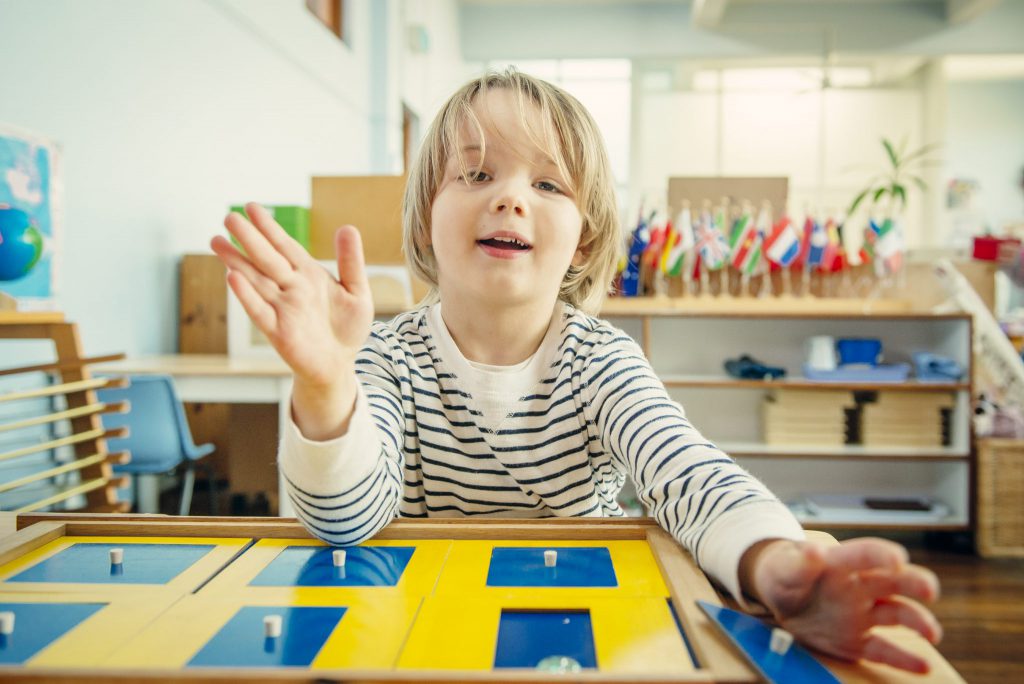
- Astonishing physical growth of the body and neural growth in the brain.
- Refinement of body movements and fine-motor control.
- Highly active sensory organs. The child is a ‘sensory explorer’.
- Particular connection to touch and utilising the hand to develop the mind.
- Increased vulnerability to illness.
Psychological characteristics
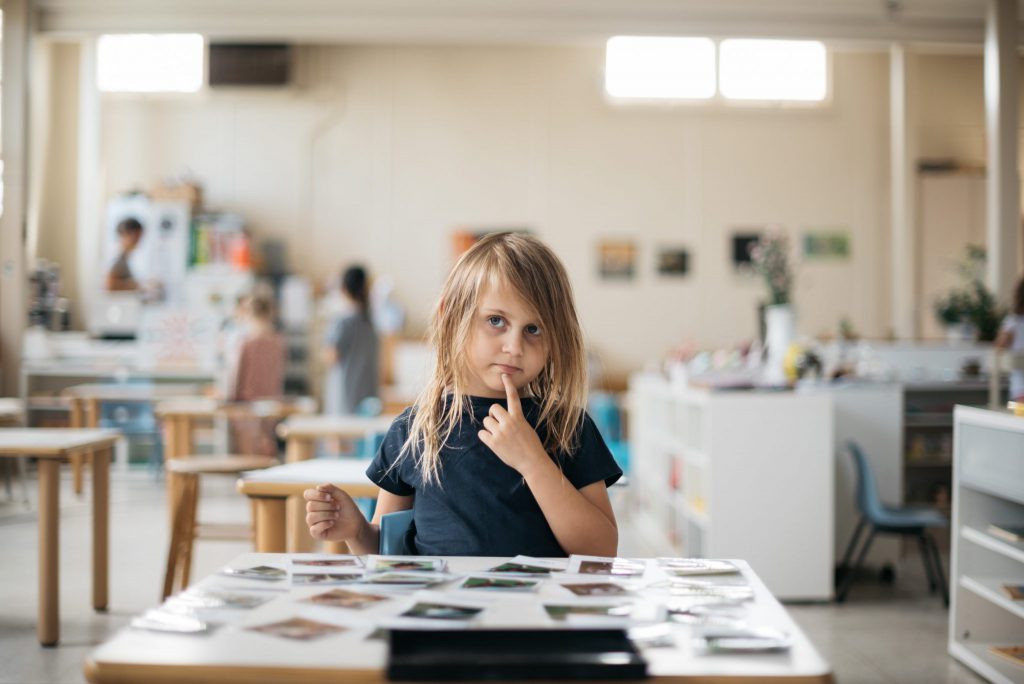
The 3 – 6 year old child integrates vast amounts of knowledge and impressions through interactions and experiences within his/her environment, this is called the Absorbent Mind. The child does not discern what to absorb and what to ignore; all impressions are absorbed into the child’s mind and attribute to forming the child’s personality/sense of self/intelligence.
Between the ages of 3 – 6 the child’s intelligence is developed through activity.
Sensitive periods for learning present during this period. A sensitive period is a ‘window of time’ in a child’s development where he/she is drawn to particular activities and the mind is most sensitive/able to absorb particular skills or learning experiences. The child from 0 – 6 has a sensitive period for language, order, perception and movement.
The formation of the individual occurs from 0 – 6 years. From 0 – 3, this is unconscious creation; from 3-6, the child is a conscious worker. The child completely adapts to their time and culture.
Social characteristics
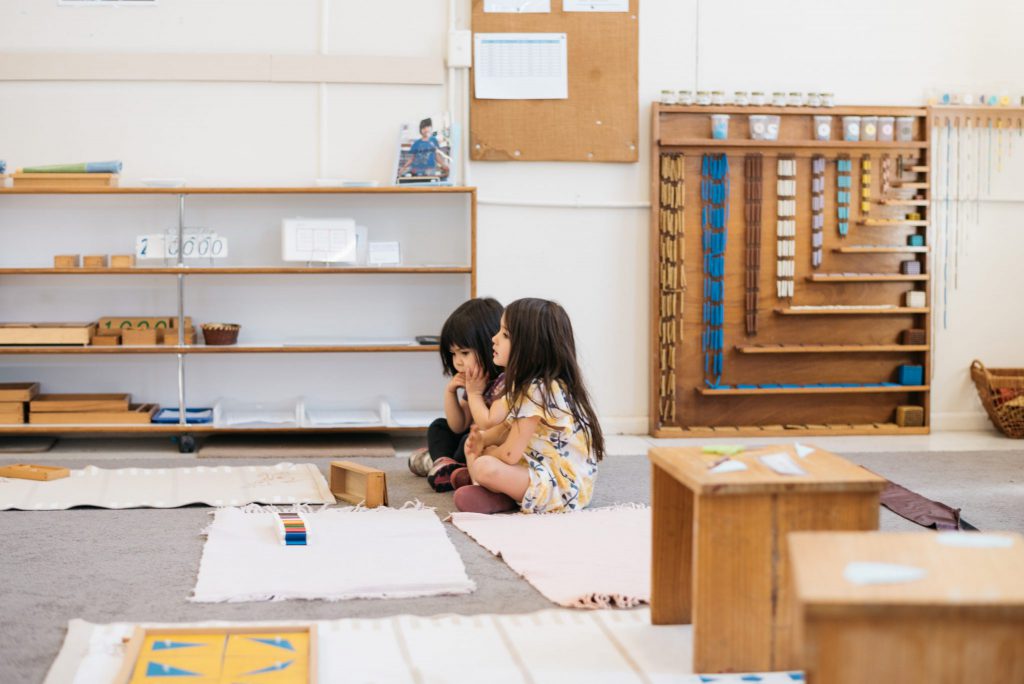
Children between the ages of 3 – 6 are parallel learners. That is, they learn individually and independently of one another but work alongside each other in a community. Children in this stage have a strong sense of self, of ‘me’ and ‘mine’. They are egocentric and experience the world from one perspective: their own.
The reasoning mind has not developed in a child 3 – 6 years of age and they are not able to think abstractly or ‘put themselves in someone else’s shoes’, until the second plane of development.
Children in this stage have a strong need for physical order, predictability and structure within their environment. Many opportunities for communication must be provided for this age group.

